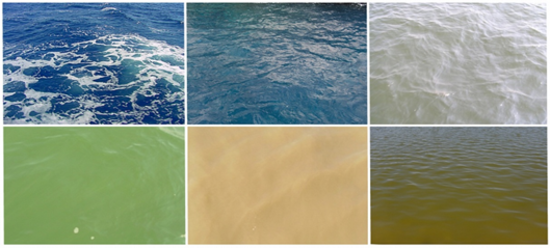What is water colour?
The colour of the water, together with its clarity, is one of the most apparent characteristics to the human eye when natural water is observed. In general, the apparent colour is a result of substances that are either suspended or dissolved in the water column. There are three main components besides the water itself (which has a pale blue colour) affecting the water colour in natural environments:
1) Phytoplankton (microscopic algae) or chlorophyll containing particles. These organisms generally cause a green colouration of the water (due to the presence of chlorophyll within their cells), except for certain species of phytoplankton that cause a red or brown colouration.
2) Non-algal matter, such as fine soils (chalk). Its effect on the water colour will depend on the origin of the material (brownish or reddish) but in general it gives a ‘cloudy’ effect to the water.
3) Dissolved coloured matter, mainly organic compounds including humic acids and tannins that originate from many types of terrestrial and aquatic plants, and give the water a yellow to brownish colouration.
The type and mutual proportion of the concentrations of these main components determine the specific water colour, and different types of natural waters (rivers, lakes, seas and oceans) can be recognised and classified in relation to these proportions.
The colour of water has always intrigued painters, poets and people in general. Over the years, methods were described to record water colour in a thrust full manner. One of the oldest methods uses the Forel-Ule colour comparator scale. An example of the diversity in colour of natural waters seen through our eyes or by camera is given in Figure 1.

Figure 1. Six differently coloured sea areas with from left to right top; Central Atlantic, Central North Sea, Coastal North Sea. From left to right bottom; Coastal North Sea during algal bloom, Wadden Sea with lots of re- suspension of sediment and a coastal outlet dominated by yellow substance. (photos: Courtesy of B. Aggenbach, A. Hommersom and M.Wernand).
